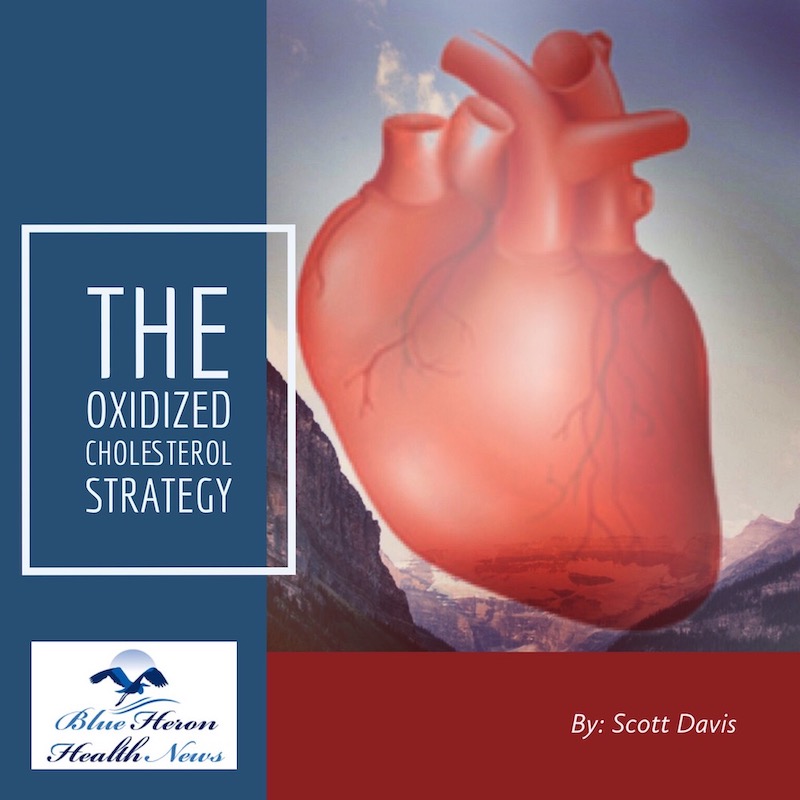
The Oxidized Cholesterol Strategy™ By Scott Davis The Oxidized Cholesterol Strategy is a well-researched program that reveals little known secret on how to tackle cholesterol plaque. This program will tell you step by step instructions on what you need to completely clean plaque buildup in your arteries so as to drop your cholesterol to healthy level.
How can one test for oxidized cholesterol levels?
Testing for oxidized cholesterol levels involves several methodologies and biomarkers that can provide insight into oxidative stress and its impact on cardiovascular health. These tests can be performed in specialized laboratories and are often used in research settings or for individuals with high cardiovascular risk. Here’s a detailed explanation of the methods used to test for oxidized cholesterol levels:
1. Direct Measurement of Oxidized LDL (OxLDL)
Enzyme-Linked Immunosorbent Assay (ELISA)
- Principle: ELISA is a widely used method to measure OxLDL levels in the blood. It involves using antibodies specific to oxidized epitopes of LDL.
- Procedure: Blood samples are collected and serum or plasma is isolated. The samples are then incubated with antibodies that bind to OxLDL. A secondary antibody, usually linked to an enzyme, is added, which produces a colorimetric or fluorometric signal proportional to the amount of OxLDL.
- Interpretation: The intensity of the signal is measured and compared to a standard curve to quantify the concentration of OxLDL.
2. Advanced Lipoprotein Testing
Lipoprotein Subfraction Analysis
- Nuclear Magnetic Resonance (NMR) Spectroscopy: This technique measures the size and concentration of lipoprotein particles, including LDL. Smaller, denser LDL particles are more prone to oxidation.
- Gradient Gel Electrophoresis: Separates lipoproteins based on their size and charge, allowing for the identification of small, dense LDL particles.
3. Oxidative Stress Biomarkers
F2-Isoprostanes
- Description: F2-isoprostanes are stable products of lipid peroxidation and are considered reliable markers of oxidative stress.
- Measurement: These can be measured in plasma or urine using techniques such as gas chromatography-mass spectrometry (GC-MS) or liquid chromatography-tandem mass spectrometry (LC-MS/MS).
Malondialdehyde (MDA) and 4-Hydroxynonenal (HNE)
- Description: MDA and HNE are reactive aldehydes formed during lipid peroxidation and are markers of oxidative damage to lipids.
- Assays: These can be measured using thiobarbituric acid reactive substances (TBARS) assay for MDA or specific ELISA kits for HNE.
4. Oxidized Phospholipids on Apolipoprotein B-100 (OxPL/apoB)
Specific ELISA Kits
- Principle: Similar to the OxLDL ELISA, this test measures oxidized phospholipids bound to apoB-100, the main protein component of LDL.
- Procedure: Blood samples are analyzed using ELISA kits designed to detect oxidized phospholipids on apoB-100.
5. Myeloperoxidase (MPO) Activity
Measurement of MPO Levels
- Role of MPO: Myeloperoxidase is an enzyme released by activated neutrophils and monocytes that catalyzes the formation of reactive species, contributing to LDL oxidation.
- Assays: MPO levels can be measured using specific ELISA kits or activity assays, providing indirect evidence of oxidative stress and LDL oxidation.
6. Oxidized LDL Autoantibodies
Autoantibody Detection
- Principle: The immune system can produce autoantibodies against oxidized LDL, reflecting oxidative modification of LDL in vivo.
- Measurement: ELISA can be used to measure the levels of these autoantibodies in the blood.
7. Flow Cytometry
Detection of Oxidized LDL
- Principle: Flow cytometry can be used to detect and quantify oxidized LDL particles in blood samples by using fluorescently labeled antibodies specific to oxidized epitopes.
- Procedure: Blood samples are incubated with these labeled antibodies and analyzed using a flow cytometer to determine the presence and amount of OxLDL.
8. Clinical and Research Considerations
Clinical Utility
- Risk Assessment: Measuring oxidized cholesterol and related biomarkers can help assess cardiovascular risk, especially in individuals with atherosclerosis or high oxidative stress.
- Monitoring Therapy: These tests can be used to monitor the effectiveness of antioxidant therapies or lifestyle interventions aimed at reducing oxidative stress and cardiovascular risk.
Limitations
- Availability: Some of these tests, especially advanced lipid profiling and specific oxidative stress biomarkers, may not be widely available in routine clinical laboratories and are often used in research settings.
- Cost: The cost of these specialized tests can be higher compared to standard lipid panels.
Conclusion
Testing for oxidized cholesterol levels involves various methodologies, including direct measurement of OxLDL, advanced lipoprotein testing, and assessment of oxidative stress biomarkers. These tests provide valuable insights into the oxidative modification of LDL and its role in cardiovascular disease. While they are more commonly used in research and specialized clinical settings, they offer important information for assessing cardiovascular risk and monitoring the impact of therapeutic interventions. Regular testing and proactive management can help mitigate the adverse effects of oxidized cholesterol and improve cardiovascular outcomes.
The Oxidized Cholesterol Strategy™ By Scott Davis The Oxidized Cholesterol Strategy is a well-researched program that reveals little known secret on how to tackle cholesterol plaque. This program will tell you step by step instructions on what you need to completely clean plaque buildup in your arteries so as to drop your cholesterol to healthy level.
